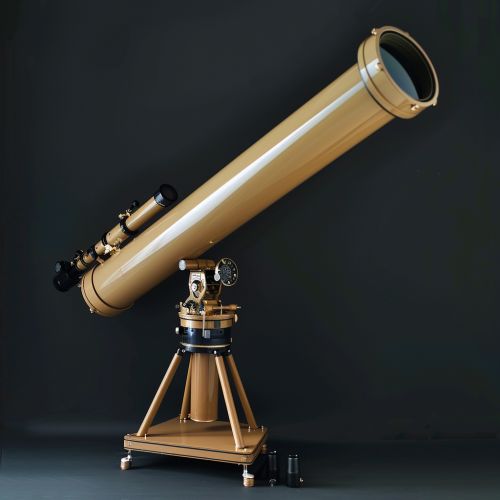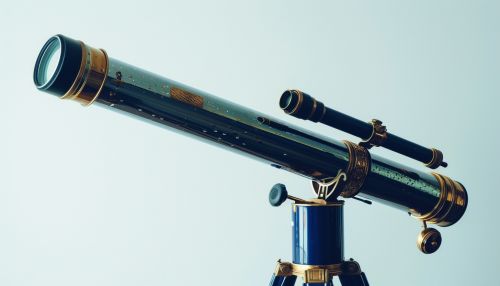Catadioptric telescope
Overview
A catadioptric telescope is an optical system that employs both lenses (dioptrics) and mirrors (catoptrics) to focus light. This type of telescope is known for its ability to provide large-diameter objectives with shorter focal lengths, which results in a more compact design. The catadioptric telescope is a versatile instrument used in a variety of applications, including astronomy, surveillance, and photography.
History
The concept of a catadioptric telescope can be traced back to the 17th century, with the work of French mathematician and philosopher René Descartes. Descartes proposed a theoretical design for a catadioptric telescope in his 1637 treatise, Dioptrique. However, the first practical implementation of a catadioptric system was not realized until the 19th century, with the invention of the Mangin mirror by French officer and engineer, Colonel Alphonse Mangin.


Design and Operation
The fundamental principle behind a catadioptric telescope is the combination of refractive and reflective elements to focus light. The primary mirror at the back of the telescope collects light and reflects it towards the secondary mirror. The secondary mirror, in turn, reflects the light back towards the primary mirror and through a hole in its center to the eyepiece. This design allows for a long focal length in a compact body, as the light path is effectively folded within the telescope.
There are several types of catadioptric telescopes, each with its own unique design characteristics. These include the Schmidt-Cassegrain telescope, the Maksutov-Cassegrain telescope, and the Ritchey-Chrétien telescope.
Types of Catadioptric Telescopes
Schmidt-Cassegrain Telescope
The Schmidt-Cassegrain telescope (SCT) is a popular type of catadioptric telescope. It uses a spherical primary mirror and a secondary mirror that is convex. The SCT also employs a corrector plate, a thin lens that reduces spherical aberration. This design results in a wide field of view and a compact body, making the SCT a versatile instrument for both terrestrial and celestial observations.
Maksutov-Cassegrain Telescope
The Maksutov-Cassegrain telescope (MCT) is similar to the SCT but uses a thick meniscus corrector lens instead of a thin corrector plate. This design reduces aberrations even further, resulting in sharper images. However, the MCT is typically heavier and more expensive than the SCT due to the cost and complexity of manufacturing the corrector lens.
Ritchey-Chrétien Telescope
The Ritchey-Chrétien telescope (RCT) is a specialized type of catadioptric telescope that uses hyperbolic mirrors instead of spherical ones. This design eliminates coma, an optical aberration that causes stars to appear comet-like at the edges of the field of view. The RCT is commonly used in professional observatories and by astrophotographers.
Applications
Due to their compact size and versatility, catadioptric telescopes are used in a variety of applications. They are popular among amateur astronomers for their portability and ease of use. In addition, their high-quality optics make them suitable for astrophotography and long-distance terrestrial observations.
In the professional realm, catadioptric telescopes are often used in observatories and space telescopes. For example, the Hubble Space Telescope employs a Ritchey-Chrétien design.
